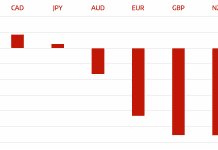Stablecoins have emerged as a notable disruptor in finance and banking. These digital currencies, typically pegged to stable assets like fiat money or gold, promise the benefits of cryptocurrency without the usual volatility. As they grow in popularity, their potential impact on traditional monetary policy and central banking functions is becoming increasingly significant. Let’s discover how the widespread adoption of stablecoins might reshape monetary policy and the broader financial system.

Defining Stablecoins and Their Role in Today’s Economy
Stablecoins represent a unique category within the cryptocurrency ecosystem. Unlike their more volatile counterparts, these digital currencies are designed to maintain a constant value by being pegged to traditional assets. The idea is simple yet powerful: combine the instant processing and privacy of cryptocurrencies with the stable value of traditional currencies. This dual advantage makes stablecoins an attractive medium of exchange. Their integration into payment systems and financial transactions suggests a pivotal shift in how we think about money in a digital-first economy.
The Impact on Traditional Banking
The rise of cryptocurrency has prompted significant interest and concern among traditional financial institutions. Banks are particularly attentive to the way stablecoins could influence their operations, ranging from payment processing to the very essence of banking—deposit-taking and lending.
As stablecoins become more integrated into everyday financial activities, they offer a streamlined, low-cost alternative to traditional banking services. This could potentially reduce the reliance on banks for certain services, compelling them to adapt their business models. Banks may need to innovate and find new ways to offer value to retain customers, who now have more options than ever before.
Stability and Trust: Can Stablecoins Be Reliable Long-Term?
Never before has the question of trust in financial mediums been so central to the discourse surrounding money. Stablecoins promise stability, but this stability is heavily reliant on the underlying assets to which they are pegged and the governance models that manage them. If the assets experience volatility or if the governance models fail, the stablecoin could lose its value.
Furthermore, the legal and regulatory frameworks for a stablecoin are still in development, which adds layers of uncertainty. This scenario raises crucial questions about their reliability as a long-term solution for stable digital currency. As central banks evaluate the implications of incorporating stablecoins into their monetary policies, they must consider these factors to maintain economic stability and protect consumers.
Regulatory Challenges and Opportunities
Regulation is a significant hurdle for stablecoins, but it also presents opportunities to enhance financial stability and protect consumers. Governments, businesses, and even regulatory bodies worldwide are grappling with how to classify and manage these digital assets. Without clear regulations, the risks include potential fraud, money laundering, and financial instability.
However, effective regulation could legitimize stablecoins as a safe component of the financial system. This would require collaboration between nations to set international standards and practices that ensure transparency, security, and compliance across borders. For central banks, this means an opportunity to guide the development of stablecoins in a way that supports innovation while safeguarding the economic system.
International Impact and Global Policy Considerations
As stablecoins gain traction globally, they have the potential to influence international trade and cross-border transactions. Their use can simplify transactions by minimizing exchange rate risks and transaction costs, making them particularly attractive for multinational corporations and developing economies.
However, this also poses challenges for central banks in managing currency flows and exchange rates. Policymakers must consider the impact on foreign exchange markets and international financial stability. The adoption of stablecoins might even prompt a reevaluation of the global financial system, particularly in how international reserves are managed and utilized.
The Future of Finance: Integrating Stablecoins with Central Bank Digital Currencies (CBDCs)
Central bank digital currencies (CBDCs) represent an acknowledgment by central banks of the transformative potential of digital currencies. Some argue that CBDCs could coexist with or even compete against stablecoins. If central banks develop their own digital currencies, they could provide a state-backed, stable, and secure alternative to privately issued stablecoins, combining the benefits of digital currency with the trust and authority of the state.
The strategic integration of CBDCs could redefine monetary policy, enhancing how central banks manage economic cycles, control inflation, and stimulate growth. This development might set the stage for a new era in financial history, where digital currencies and traditional banking merge into a cohesive system.
HedgeThink.com is the fund industry’s leading news, research and analysis source for individual and institutional accredited investors and professionals


































